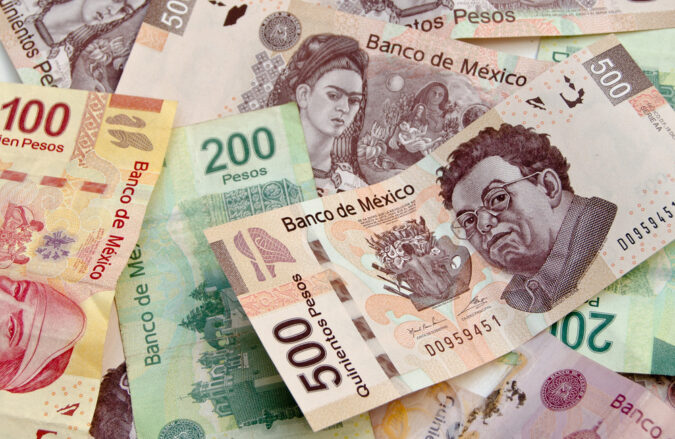
According to economists, Mexico’s peso seems to be on course for trimming gains it had recorded in recent months but would continue trading at strong levels.
This would be thanks to the aggressive monetary policy tightening by the central bank for combating high inflation.
The movements
While the decline would mean that the peso would lose almost 5% of gains it had recorded in the previous year, which had been its best performance in the last 5 years, it would still leave it close to 20 against the US dollar.
This is the value around which the Mexican peso has been oscillating since 2017. The currency strengthened after hawkish policymakers continued to hike up the interest rates.
In December, there was an increase of 50 basis points, which saw the rates reach 10.5%. Since April 2021, Banxico, the central bank of the country, has increased the interest rates by 650 basis points.
In a year’s time, the Mexican peso is expected to reach 19.83 against the US dollar, which would mean a possible loss of 3.5% from Monday’s value, which had been 19.16.
The expectations
Market analysts said that there is a great deal of pressure due to a strong labor market, un-anchored inflation expectations and nearshoring.
Therefore, Banxico does not have a lot of room for risking depreciation and cannot just decouple from the Federal Reserve.
This week, it is highly likely that the Mexican peso will receive more support because there will be an increase in the interest rate.
The hike is expected to be around 25 basis points, which would push up the rate to 10.75% because of persistent inflation pressures throughout the month of January.
This would mean that the currency has a margin over the upper limit of the rates of the US Fed by 600 basis points, which makes it a great opportunity for investors who are risk tolerant.
There has been a 1.6% increase in the peso year-to-date against the US dollar.
Other markets
The Brazilian real, on the other hand, is expected to continue moving downwards, as it has already dropped 1.7% against the US dollar in about 12 months.
On Monday, the Brazilian real stood at 5.15 and has come down from 5.24 against the US dollar. It has recorded a gain of 1% since the beginning of this year.
The markets in Brazil have found themselves in the crossfire of a widening dispute between the new government of the country and the central bank.
The former seems to be focused on social issues and has openly criticized the high interest rates that have been announced by the central bank.
There was a weakening in the Brazilian real on Monday after the latest comments from Luiz Inacio Lula da Silva, the country’s President, regarding the stringent policy of the central bank.
According to a survey, markets are now expecting the Brazilian central bank to start its easing in November instead of September, as previously expected.









